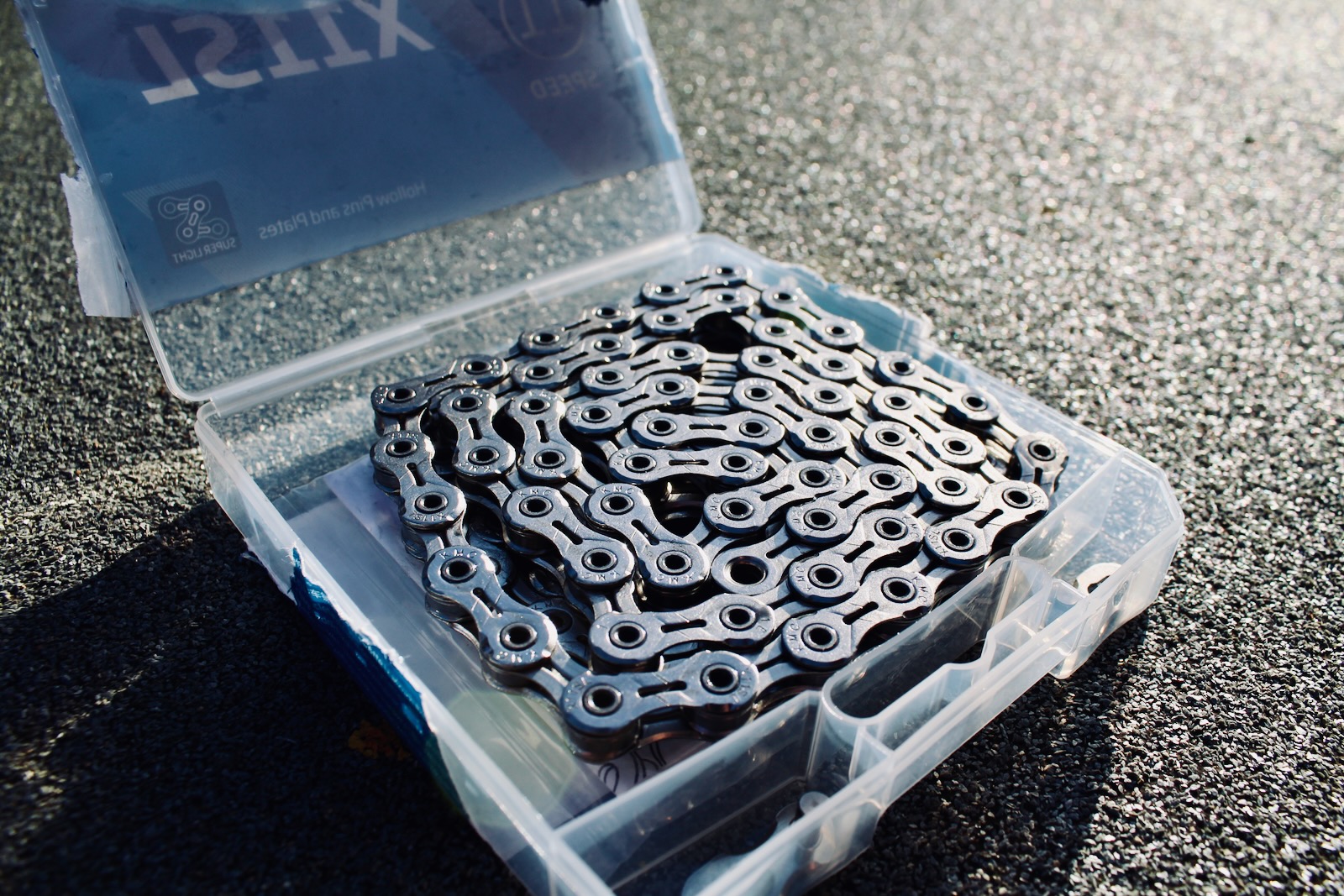Workshop Focus – When To Replace Your Bike Chain

Your bicycle chain is the link between the power you put down through the crank arms and the cogs on your rear wheel—that when turned, propel your bike forwards. That means your chain gets a tough time; it transmits all that power as it bends and stretches around your drivetrain.
A bicycle chain is composed of inner plates and outer plates, held apart by pins, and with a bushing/roller on the pins that allows the chain to roll around cogs. All these metal surfaces touch each other as the chain works, which means friction. Bicycle chain lube goes a long way to helping reduce the friction on a bicycle chain (read my previous blog post on 'How to Choose Your Bike Chain Lubricant'. But, over time that friction will wear away at the inner-plates, pins and bushings of your chain, causing it to streeeetch…
Chain stretch is a bit of a miscommunication of what is actually happening with your chain as it wears. Your chain does not stretch as such, but the distance between two bushings/pins (called the pitch) does increase over time as a result of each inner plate, bushing, and each pin wearing down.
The problem with chain wear/stretch is that the resulting longer distance between the two chain pins means the chain no longer happily sits on the teeth of the cassette and chainring, because the teeth are made to match up with the gaps on a new chain. This mismatch means the chain tries to wear away at the teeth of your chainrings and cassette to create a better meshing—that wear is grinding and damaging.
In order to prevent expensive damage to your chainrings and cassette, it is advised that you replace your chain (the cheapest part of the bicycle drivetrain) before it reaches a stretch level that will cause lasting damage to the rest of the drivetrain (a new chain will no longer work on overly worn teeth).
Two 'stretch' levels are identified: 0.75% stretch and 1.0% stretch; this can be accurately measured using a chain wear checker.
A 0.75% stretch level is the point at which replacing a chain will likely cause no problems at all. By 1.0% stretch you risk that the old worn chain will have damaged the teeth of the cassette and chainring; and as such a new chain will not happily sit on the teeth—it will 'skip' and 'jump'.
So, you have identified that you need to replace your bicycle chain, but what kind of replacement chain should you buy?
The first thing to ensure is that you choose the correct speed of chain—as a 11-speed chain will not work on 12 speed drivetrains, for example.
The second thing to ensure is that you purchase the correct brand chain. Campagnolo chains work far better on Campagnolo drivetrains, in my experience; while SRAM and Shimano chains are more interchangeable if needed; and some brands such as KMC produce chains that can be used on SRAM, Shimano and other drivetrains.
The third thing is how much to spend on your replacement bike chain. To better understand the differences between a 'value' price point chain and a 'top-level chain', here's a breakdown of the KMC chain range:
KMC X11 11 Speed Chain
- Weight per 110 links: 242 g
- Length: 118 Links
- Compatible with all 11-speed derailleur systems
- Perfect shifting thanks to Double X-Bridge
- Includes a MissingLink
- Durability: 3/5

KMC X11SL 11-Speed Chain
- Weight per 110 links: 227 g
- Length: 118 Links
- Compatible with all 11-speed derailleur systems
- Perfect shifting thanks to Double X-Bridge
- Slotted inner and outer plates and hollow pins
- Includes a MissingLink
- Durability: 5/5

KMC DLC11 11-Speed Chain
- Weight per 110 links: 227 g
- Length: 118 Links
- Compatible with all 11-speed derailleur systems
- Diamond Like Coating
- Perfect shifting thanks to Double X-Bridge
- Slotted inner and outer plates and hollow pins
- Includes a MissingLink
- Durability: 5/5

From the above it is clear that you get a lighter and more durable chain the more you pay. More expensive chains are lighter because they have slotted inner plates and/or hollow pins; they are more durable because the surfaces are machined to a higher standard, so the friction is lower from the very start.
Note: The KMC X11SL and DLC11 are identical in composition, but the DLC has colour chain plates for the ultimate colour coordination.
Replacing your worn bike chain will improve your shifting, extend the life of your cassette and chainrings, and keep you riding in efficient silence for longer. A workshop task every cyclist should know.
Note: The KMC X11SL and DLC11 are identical in composition, but the DLC has colour chain plates for the ultimate colour coordination.
Replacing your worn bike chain will improve your shifting, extend the life of your cassette and chainrings, and keep you riding in efficient silence for longer. A workshop task every cyclist should know.




When is it time to replace your bike chain? You’ll have no doubt noticed the repetitive noise from your drive train when you shift gears. Some of this sound is due to your gears, but usually a lot of it comes from your drive train about 3-4 times a second. This demonstrates that there are some good sized gaps in your chain links, and for most cyclists Here, this is nothing to be concerned about, but for high performance cyclists and specialist mountain bikers, you can improve the lifetime of your bike’s chains by replacing them more regularly.
ReplyDelete